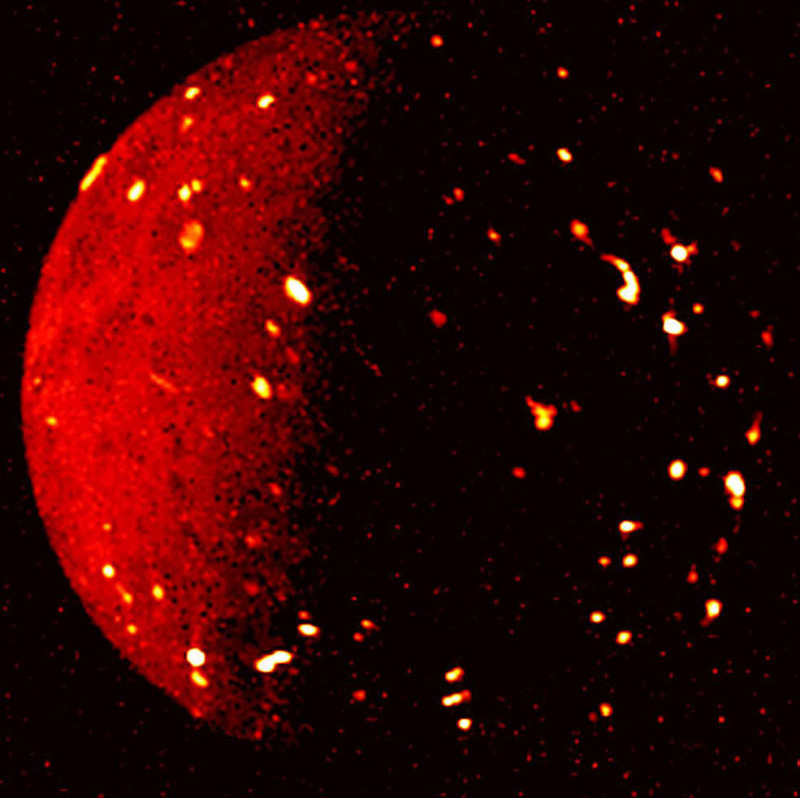Analyzes of Ganymede and Europa – Lots of facts and information from the mission – First photos from Io
Her space robot roams the inner moons of the superplanet Jupiter NASA Juno, which, tomorrow, December 15, is expected to send photos from Io. In the second year of its extended mission to explore Jupiter’s interior, the solar-powered spacecraft made a close flyby of Ganymede in 2021 and Europa earlier this year.
“The team is really excited that Juno’s extended mission includes studying Jupiter’s moons. With each close flyby, we were able to gain a wealth of new information,” said Juno principal investigator Scott Bolton of the Southwest Research Institute in San Antonio. “The Juno sensors are designed to study Jupiter, but we’re excited about how well they can do double duty observing Jupiter’s moons.”
Several papers based on the June 7, 2021 Ganymede flyby were recently published in the Journal of Geophysical Research and Geophysical Research Letters. They include findings on the moon’s interior, surface composition and ionosphere, along with its interaction with Jupiter’s magnetosphere, from data obtained during the flyby. Preliminary results from Juno’s Sept. 9 flyby of Europa include the first 3D observations of Europa’s ice shell.
Under the ice
During the flyby, Juno’s Microwave Radiometer (MWR) added a third dimension to the mission’s exploration of the Jovian moons: It provided a pioneering look beneath the water-ice crust of Ganymede and Europa to obtain data on the structure, its purity and temperature to a depth of about 15 miles (24 kilometers) below the surface.
Visible light images taken by the spacecraft’s JunoCam, as well as by previous missions to Jupiter, indicate that Ganymede’s surface is characterized by a mixture of older dark terrain, younger bright terrain and bright craters, as well as linear features possibly associated with tectonic activity.
“When we combined the MWR data with the surface imagery, we found that the differences between these various terrain types are not only skin deep,” Bolton said. “The new, bright ground appears colder than the dark ground, with the coldest area sampled being the impact crater the size of the city of Tros. Initial analysis by the science team indicates that Ganymede’s conductive ice shell may have an average thickness of about 30 miles or more, with the possibility that the ice is significantly thicker in some areas.”
Magnetospheric Fireworks
During the spacecraft’s June 2021 close approach to Ganymede, Juno’s Magnetic Field (MAG) and Jovian Auroral Distributions Experiment (JADE) instruments recorded data showing evidence of the breaking and reforming of the magnetic field connections between Jupiter and Ganymede. Juno’s ultraviolet spectrometer (UVS) has observed similar events to the moon’s ultraviolet aurora emissions, organized into two ovals that wrap around Ganymede.
“Nothing is easy – or small – when you have the largest planet in the solar system as your neighbor,” said Thomas Greathouse, a Juno scientist at SwRI. “This was the first measurement of this complex interaction on Ganymede. This gives us a very early tantalizing taste of the information we expect to learn from JUICE’ – ESA’s (European Space Agency) Jupiter ICy moons Explorer – ‘and NASA’s Europa Clipper missions.’
Volcanic Future
Jupiter’s moon Io, the most volcanic place in the solar system, will remain the focus of the Juno team for the next year and a half. The Dec. 15 lunar probe will be the first of nine flybys — two of them from just 930 miles (1,500 kilometers) away. Juno scientists will use these flybys to conduct the first high-resolution monitoring campaign on the magma-encrusted moon, studying Io’s volcanoes and how volcanic eruptions interact with Jupiter’s powerful magnetosphere and aurora.
Read the News today and get the latest news.
Follow Skai.gr on Google News and be the first to know all the news.
I am Terrance Carlson, author at News Bulletin 247. I mostly cover technology news and I have been working in this field for a long time. I have a lot of experience and I am highly knowledgeable in this area. I am a very reliable source of information and I always make sure to provide accurate news to my readers.











